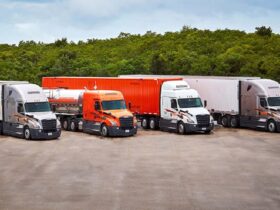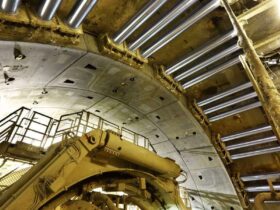In today’s rapidly evolving business landscape, innovation is not just a buzzword but a necessity for survival and growth. A facilities management company plays a crucial role in fostering this environment of innovation by implementing new technologies and processes that enhance efficiency, productivity, and employee engagement. This article explores how facilities management can act as a catalyst for innovation in the workplace.
Cultivating an Innovative Environment
Strategic Space Planning
The layout and design of a workspace significantly influence how employees interact, collaborate, and think creatively. Facilities management can drive innovation by designing spaces that foster collaboration and flexibility. This includes creating open-plan workspaces that encourage spontaneous interactions, as well as quiet zones for deep thinking, and versatile areas that can be reconfigured as needed for different projects.
Facilitating Technology-Enhanced Workspaces
In the digital age, the integration of technology into the physical workspace is a key driver of innovation. Facilities management is pivotal in embedding advanced technological infrastructure such as high-speed internet access, wireless communication systems, and smart devices into the workplace. These technologies enable employees to work more efficiently and collaborate more easily, both in-office and remotely.
Implementing Smart Building Technologies
IoT and Automation
Facilities management companies are increasingly using the Internet of Things (IoT) and automation to transform traditional workspaces into smart buildings. IoT sensors can monitor and control various aspects of the physical environment, such as lighting, temperature, and even the utilization of spaces. By automating these elements, facilities management can create a more comfortable and adaptive workplace that responds in real-time to the needs of its users.
Data-Driven Decision Making
By collecting and analyzing data from smart technologies, facilities managers can gain insights into how workspaces are used and how they can be improved. This data-driven approach allows for continual refinement of the workspace, ensuring it always supports the changing needs of the business and its employees. For instance, data on peak occupancy can help in optimizing energy use or redesigning spaces to better serve the number of users.
Enhancing Sustainability and Creativity
Green Initiatives
Sustainability is often a key component of innovative companies. Facilities management can contribute by implementing green technologies and practices, such as energy-efficient systems, sustainable waste management, and eco-friendly materials. These initiatives not only reduce the company’s environmental impact but also create a healthier workplace that can enhance cognitive function and creativity among employees.
Creative and Inspirational Designs
The aesthetic of a workplace can significantly influence creativity. Facilities management can incorporate elements that inspire and stimulate creativity, such as artworks, innovative furniture designs, and interactive installations. Natural elements like plants or water features can also enhance creativity by reducing stress and improving air quality.
Promoting Health and Well-Being
Ergonomic Designs
Innovative facilities management includes ergonomic workplace designs that promote health and well-being. By providing ergonomic furniture and designing workspaces that encourage physical movement and reduce strain, facilities management can help maintain the physical and mental health of employees, which is crucial for sustaining creativity and innovation.
Wellness Programs
Facilities managers can also design and manage spaces that support wellness programs such as fitness centers, meditation areas, or even nap rooms. These facilities encourage employees to take breaks and recharge, which is essential for maintaining high levels of innovation and productivity.
Encouraging Continuous Improvement
Flexible and Scalable Solutions
As businesses grow and evolve, their needs change. Facilities management can support continuous improvement by providing flexible and scalable workplace solutions. This might involve modular furniture, movable walls, or technology that can easily be upgraded as needs change.
Feedback Loops
Implementing mechanisms to capture feedback on the workspace from employees can provide invaluable insights into further innovations. Facilities management can use this feedback to continuously adapt and improve the workplace environment, ensuring it always fosters innovation.
Conclusion
Facilities management is increasingly recognized as a driver of innovation within the workplace. By strategically managing physical spaces, integrating cutting-edge technologies, and promoting sustainability and well-being, facilities management companies can create environments that inspire creativity and innovation. These environments not only enhance the productivity and satisfaction of employees but also position the company at the forefront of innovation in its industry. As businesses continue to recognize the value of innovative workspaces, the role of facilities management will become ever more crucial in shaping the future of work.








